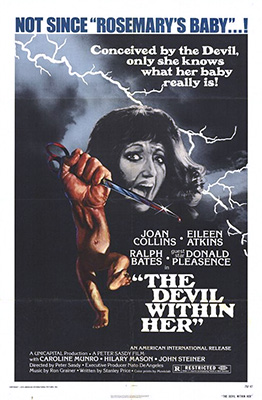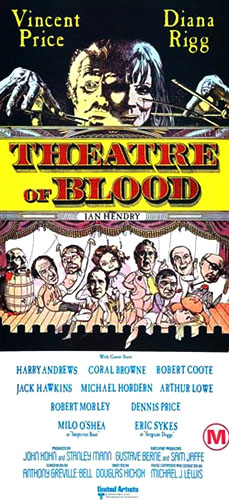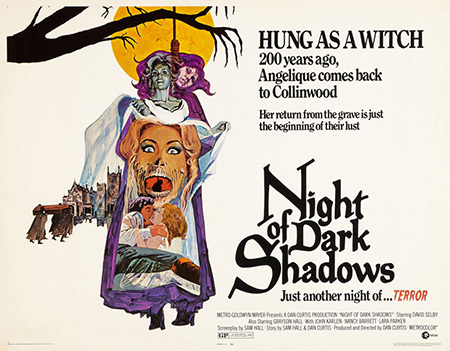
Ex-stripper Lucy Carlesi (played by Joan Collins) has just given birth to a healthy baby boy named Nicholas. The newborn has incredible strength and is prone to violence causing Lucy to believe the child is possessed, possibly by Satan himself. Of course, no one (including her husband, Gino (Ralph Bates)) believes her but what they don’t know is that Hercules, a dwarf (George Claydon) from her strip club days, placed a curse on Lucy’s firstborn child because she wouldn’t return his affections. Despite his best efforts, Dr. Finch (Donald Pleasence) cannot determine what is causing the child to exhibit such horrible behavior. As mysterious “accidents” continue to happen to those taking care of Nicholas, Lucy’s sister-in-law, Sister Albana (Eileen Atkins), believes that the child’s problems are more than just scientific.
Peter Sasdy, director of Hammer entries such as Taste the Blood of Dracula and Hands Of the Ripper, brings this transcendentally trashy Joan Collins vehicle to the screen. Even though The Devil Within Her is a tasteless The Exorcist and Rosemary’s Baby-inspired romp, the talent behind the cinematography, lighting, and editing are all competent. Veteran film and TV composer, Ron Grainer (The Omega Man), provides the excellently surf/prog/pop score that seems to have been written for an entirely different movie. So that leaves us with plot. Oh doctor! The plot is unbelievably insipid as evidenced by the gratuitous sex scene between Bates and Collins (character development!). The life-draining script crashes and burns so often that even the actors actually look stunned reciting it.
It really shows the dedication of the cast to put up with all this crap. The faith vs. science debate between Dr. Finch and Sister Albana is quite inspired considering the horrible dialogue. As usual, Donald Pleasence can deliver anything with unshakable sincerity. Even Eileen Atkins (Equus, Cold Comfort Farm) is able to lend her incredible talent to this drivel. I recommend putting this entire scene on mute and imagining something inspiring.
It’s hard to get around Ralph Bates’ (Lust for a Vampire) awkward pseudo-Italian accent to tell if he’s actually giving a good performance here. I wanted to see more of Caroline Munro (Maniac) as Lucy’s stripper buddy, Mandy, but there wasn’t much for her character to do. John Steiner (Tenebre, Shock) is also present as the vile Tommy, Lucy’s ex-lover whose bloody nose at the baby’s hands is well deserved.
And then there’s Joan Collins. First of all, one doesn’t merely watch a Joan Collins film, one experiences it! The Devil Within Her is Collins’ last foray into the horror genre and what a shame (that’s not sarcasm)! Her awe inspiring ultra-melodramatics are quite comical during the narration of Lucy’s flashbacks and her expressions of terror steamroll across the screen.
And finally, the most misused and abused actor in the film (besides the uncredited baby playing Nicholas) is George Claydon as Hercules. The exploitative nature of his role is propelled into the stratosphere when (through painful jump-cuts) Hercules takes the place of Nicholas in the crib wearing baby clothes. Other than being an evil little person there’s absolutely nothing to his character at all. And when Hercules cops a feel on Lucy, how does she react? With revulsion!
The Devil Within Her (AKA I Don’t Want to Be Born or even better It’s Growing Inside Her) is an extremely derivative and unintentionally hilarious anti-masterpiece. The sleaze factor is quite high in this movie. There’s attack-baby violence, dejected strippers, and a lecherous curse-spewing dwarf all for your entertainment. I highly recommend this beastly and warped little film but only because of its mega-campy merits. The Devil Within Her is quality entertainment and is painful fun tailor made for anyone with twisted ideas of what constitutes a good time in front of the TV. I love every minute of it.
“I’ve got to find someone like Gino before I bump and grind myself to death.”


